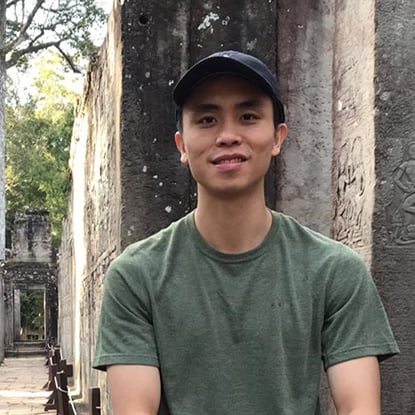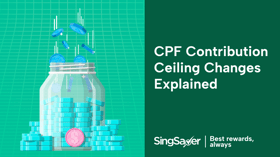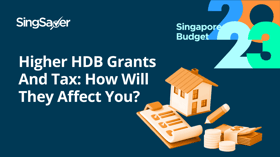Most people think CPF is only reserved for retirement and home purchases. As such, there are many misconceptions about CPF that people still get wrong. Read on to find out more about what else can CPF be used for.
The CPF Scheme is broadly known as a mandatory savings and pension plan for Singaporeans and Singapore Permanent Residents employed in Singapore. But beyond that, most are still unsure of what can CPF be used for.
Let’s take a look at 5 common misconceptions about CPF that most people still get wrong.
1. You can’t withdraw your CPF savings until you reach the retirement age
The primary purpose of your CPF savings is to support your retirement years. Hence, most people think that you can’t withdraw the money until you reach the retirement age, which is 63 years old in Singapore.
However, the fact is that you can make withdrawals from your CPF as often and at any time you want when you turn 55. The amount you can withdraw depends on how much you have in your CPF Ordinary Account (OA) and CPF Special Account (SA):
If you have S$,5000 or less in your CPF OA and SA
You can withdraw all your CPF savings.
If you have between S$5,000 and the Full Retirement Sum (FRS)
The FRS is the money that’s set aside for you in your CPF Retirement Account (RA) when you reach 55 years old, so that you can receive monthly CPF LIFE payouts when you turn 65. The FRS amount is adjusted annually based on inflation. For those who turn 55 in 2022, the amount is S$192,000.
If your OA and SA savings are between S$5,000 and the FRS, you can withdraw up to S$5,000 and the remaining balance will go to your Retirement Account.
However, if you own a property with a remaining lease that can last you to at least 95 years old, you can pledge your property to CPF and withdraw above the Basic Retirement Sum (BRS). The BRS is half of the FRS and is S$96,000 in 2022.
For example, if you have S$150,000 in CPF savings and you own a property, you can withdraw S$54,000 (S$150,000 − S$96,000).
But note that if you decide to pledge your property to CPF, your monthly CPF LIFE payouts will be lower. Also, if you sell your home in the future, you’ll need to refund the sale proceeds back to your CPF account until it hits the FRS.
If you have more than the FRS in your OA and SA
You can withdraw S$5,000 and any amount above the FRS, whichever is higher. For instance, if you have S$200,000 in your OA and SA, you can withdraw S$8,000 (S$200,000 − S$192,000).
Similarly, if you own a property with a remaining lease that can last you until you’re 95 years old, you can withdraw any amount above the BRS. So if you have S$200,000, you can withdraw: S$200,000 − S$96,000 (BRS) = S$104,000.
Remember that CPF gives you up to 6% interest for the first S$30,000 (capped at S$20,000 for OA) and 5% on the next S$30,000 of combined savings in your OA, SA, RA, and MediSave.
So, if you decide to withdraw your CPF savings, you’ll need to find a financial instrument that can offer you better interest and a similar risk profile.
2. CPF is only for retirement
One common misconception is that your CPF is “money that you can’t touch until your retirement”. However, this cannot be further from the truth.
While the CPF is designed to be used for retirement, it can also be used for the following:
Financing your home purchase
You can use your savings in your CPF OA to pay for your home’s downpayment.
If you’re taking an HDB loan to buy an HDB flat, you can use your CPF OA savings to pay for the 15% downpayment completely.
On the other hand, if you’re taking a bank loan to buy an HDB flat or private property, you’re allowed to use up to 20% of your CPF OA savings to pay for the 25% downpayment. The remaining 5% needs to be in cash.
Aside from paying for the downpayment of your home, you can also use your CPF to pay for the monthly home loan repayments, stamp duties, legal fees, title search fees, and Home Protection Scheme (HPS) insurance.
However, how much CPF OA savings you can use depends on the type of property and housing loan (but more on that later).
Paying for medical expenses
All CPF members have a MediSave account, which is used to pay for healthcare expenses such as hospitalisation, surgery, premiums for MediShield Life, ElderShield, or CareShield Life, and treatments such as chemotherapy and renal dialysis.
Additionally, you can also use it to pay for your immediate family members’ medical treatments.
In case you didn't know, just like the CPF retirement sums, there's also an estimated savings of how much you should have in your MediSave Account for basic subsidised healthcare needs, known as the Basic Healthcare Sum (BHS).
Also, like the CPF retirement sums, the BHS is adjusted yearly to keep pace with inflation and medical costs. From 1 January 2023, the BHS will be S$68,500 for those below 65 years old. If you're 65 years old in 2023, the BHS will be fixed at S$68,500 indefinitely.
Meanwhile, if you're 66 years old and above in 2023, your cohort BHS has already been fixed and will remain at S$66,000.
Pay for your education via the CPF Education Scheme
The CPF Education Scheme allows you to use your CPF OA savings to pay for the tuition fee for your own, your children, your spouse, or your sibling at approved local universities and polytechnics.
However, note that the amount you withdraw from your CPF savings will need to be returned to your CPF account along with accrued interest. You may learn more about the CPF Education Scheme here.
Investing in financial products
Your CPF savings can also be used to invest in CPF investment schemes, namely the CPF Investment Scheme (CPFIS) and Special Discounted Shares (SDS) Scheme. You can invest in exchange-traded funds (ETFs), unit trusts, shares, gold, government bonds, and endowment plans, among others.
However, you’ll need to have more than S$20,000 in your CPF OA or S$40,000 in your CPF SA before you can start investing with your CPF savings.
Looking to inflation-proof your cash? If you’re thinking of experimenting with robo advisors, Endowus lets you invest with your CPF monies.
3. You can use all your CPF money for your home purchase
One common misconception among home buyers is that they can count on using their CPF money to cover the cost of their home purchase completely.
However, there are limits to how much CPF you can use and once you’ve hit those limits, you would need to service your mortgage with cash, even if you have sufficient balance in your CPF account.
How much CPF you can use depends on the type of property and housing loan.
| Type of property | Type of loan | Property’s remaining lease can cover youngest buyer till age 95 | Property’s remaining lease doesn’t cover the youngest buyer till age 96 |
| New HDB flat | HDB loan | No CPF limit | No CPF limit |
| Resale flat | HDB loan | Valuation Limit applies | Prorated Valuation Limit + Withdrawal Limit |
| Any HDB flat or private property | Bank loan | Valuation Limit + Withdrawal Limit | Prorated Valuation Limit + Withdrawal Limit |
If you’re taking an HDB loan to buy a new flat
There will be no limit to how much CPF you can use if you’re taking an HDB loan to buy a new flat (BTO flat, SBF, ROF).
If you’re taking an HDB loan to buy a resale flat
If you’re using an HDB loan to buy a resale HDB flat, you can use your CPF up to the Valuation Limit (VL), which is the valuation/purchase price of the property at the time of purchase (whichever is lower).
For instance, if you bought a resale flat for S$400,000 but the valuation is S$410,000, the VL is S$400,000. This means that you can use your CPF up to the VL, which includes the downpayment and home loan repayments.
Once you’ve reached the VL with your CPF, you need to pay the remainder of your home loan in cash as you need to set aside the BRS before you’re allowed to withdraw further funds from your CPF account.
If you’re taking a bank loan to buy an HDB flat or private property
In addition to the VL, the Withdrawal Limit (WL) also applies to those who take a bank loan to buy a private property or HDB flat. The WL is 120% of the VL.
For example, if you bought a property for S$400,000 and the valuation is as such, the VL is S$400,000. The WL is thus S$480,000 (S$400,000 X 120%). Once you’ve withdrawn S$480,000 for your house, no further usage of CPF is allowed and you need to service your home loan with cash.
One more thing to note is the property’s remaining lease: if the remaining lease doesn’t cover the youngest buyer until age 95, the amount of OA savings you can use will be prorated from the VL and WL.
You can estimate how much OA savings you can use with the CPF housing usage calculator.
4. Your CPF savings will automatically be passed on to your nominees’ CPF accounts when you pass on
Your CPF savings in your OA, SA, RA, MediSave are not part of your estate and are not covered by a will. So unless you make a CPF nomination, your CPF savings will be transferred to the Public Trustee for distribution to your family members in cash via intestacy laws (or the Inheritance Certificate for Muslims).
So if you want your CPF savings to be distributed according to your wishes, you need to make a CPF nomination. By default, your CPF savings will be distributed to your nominees in cash, unless you specify otherwise.
5. CPF interest rates are fixed
The CPF OA earns you 2.5% interest per annum while the CPF SA, MediSave, and RA earn you 4% interest per annum.
While the rates have remained unchanged for a long time, they’re not fixed. In fact, between 1963 to June 1999 (the last time the interest rate was above 2.5%), the interest rates were between 2.5% to 6.5%.
You can, however, earn additional interest rates on your CPF accounts.
Members 55 years and below can earn up to 3.5% interest per annum on their OA savings, and up to 5% per annum on their SA and MediSave Account savings. That’s because CPF will pay you an additional 1% interest for the first S$60,000 of your CPF balances. But note that this is capped at S$20,00 from your OA.
For members 55 years and above, CPF will pay you an additional 2% interest on the first S$30,000 of your combined CPF balance (capped at $20,000 for OA), and an additional 1% on the next S$30,000. This means that they will earn up to 6% interest per annum on your total balance.
However, the extra interest you earn in your OA will go into your SA (if you’re below 55 years) or your RA (if you’re 55 and above). Since our SA only has limited usage, don’t count on using the extra interest to fund your property purchase or paying your home loan repayments.
Read these next:
Pros And Cons Of Keeping Your Savings In Your CPF Special Account
Beginner’s Guide To CPF Retirement Sums And How To Get There (2022)
A Complete Guide To CPF In Singapore (2022)
CPF Basic Retirement Sum: How to Maximise Your Retirement Payouts
How To Adjust Your CPF Payments For Your Housing Loan
Similar articles
CPF Basic Retirement Sum: How to Maximise Your Retirement Payouts
Beginner’s Guide To CPF Retirement Sums And How To Get There (2023)
How Does the CPF Withdrawal Limit Work for HDB Flats?
Should I Use CPF Or Cash To Finance My Home?
How To Build Sustainable Retirement Income With Your CPF Money
Lease Buyback Scheme: A Step-By-Step Guide To Cashing Out
Complete Guide To CPF LIFE: Facts, Myths And How To Make It Work Harder
8 Ways To Help Your Parents With Their Finances Without Giving Them Money










